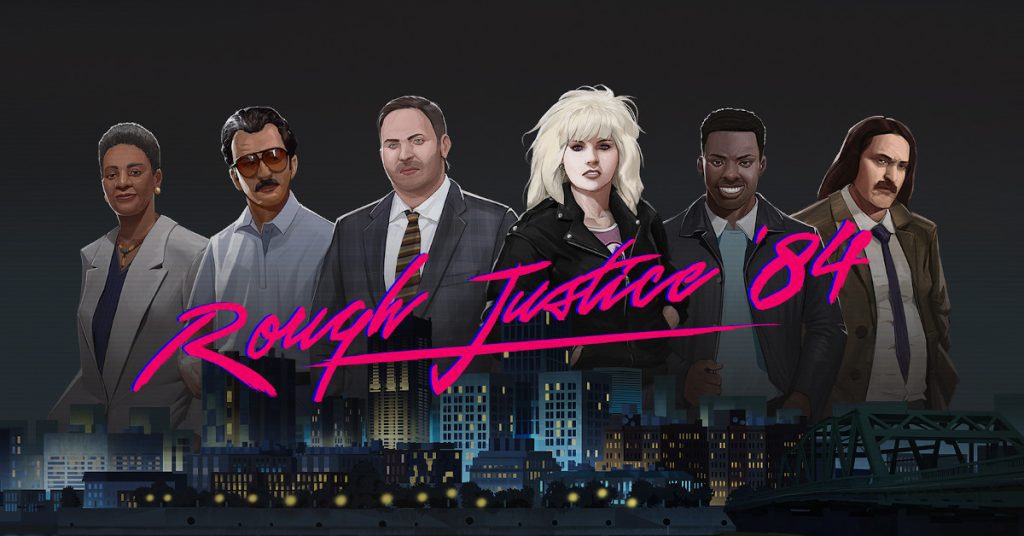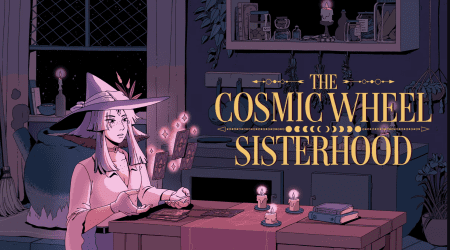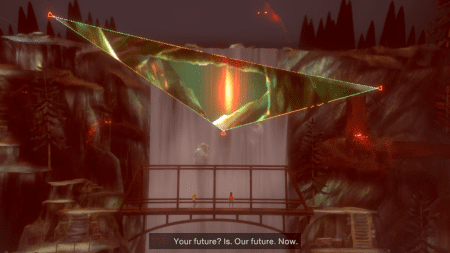What attracts you to a video game? Maybe you saw a combat trailer, got hyped about the visual style, or love the studio’s pedigree. At first glance, there was a lot I was excited about with Rough Justice: ’84, the debut game from Germany-based studio Gamma Minus UG. The game launched on PC in March 2023, and Gamma Minus ported the title to consoles in December 2023.
The premise of Rough Justice: ’84 appealed to me: “Do what it takes to make your fledgling security agency thrive in this 80s noir crime bustin’, dirty crossing, vengeance-seeking board game inspired strategy game with dice and cards.” When the site received a review code on the Switch, I offered to pick it up. I love mystery video games, I thought the art was striking, and David had liked a preview at PAX East.
Unfortunately, after about five hours with Rough Justice: ’84, I cannot recommend it (at least not on the Switch), which is a shame because it looks and sounds cool as hell.
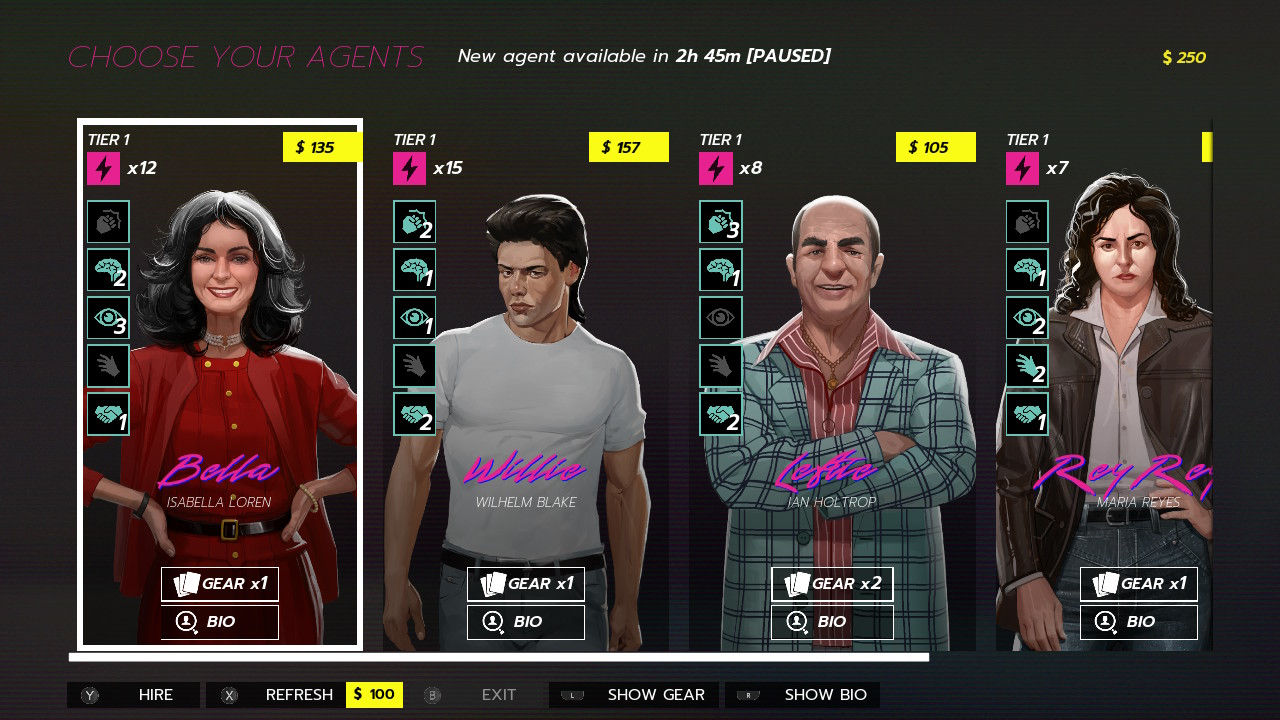
Fired from the Job
A series of still art with voiceover introduces the player as Jim Baylor, a “Super Cop” who aggressively pursued corruption and then was framed by his enemies, ultimately going to jail. As the years go by, this New York-ish city goes on to experience unprecedented levels of crime, and so the mayor enacts a special decree that gives all law enforcement, including freelance private investigators, a significant level of legal power. This made my skin crawl a little bit but sure, okay, it’s a plot device for why there are so many PIs for hire, why there’s such an influx of cases, and why these investigators have the capacity to make so much money. The player, as voiceless Jim Baylor, is released on a technicality. An old buddy from the force, Hank, approaches Baylor, thinking his name brand and expertise will help Hank’s fledgling security agency succeed among dozens of competitors trying to capitalize on the 1980s crime sprees.
The central thrust of gameplay is picking up a caseload which contains about four to six cases, and then hiring and managing “agents” who all have different gameplay stats and narrative backgrounds. Each case requires spending an action point, and they may time out if not completed within the window. Agents only have a certain amount of action points, and agents cost money, and you only make money by successfully completing cases, so you have to carefully manage your workload. A tutorial pop-up (they continue well through the first two hours of the game) explained that I would be able to build up agents’ experience over time the more I use them, and I got excited by the idea of having a roster of folks I could really count on.
Your goal is to make the agency a success, and ostensibly, to make the city a better place. I got far enough in the game that I was introduced to a progress tracker that indicated a bigger plot. Other reviews share that the story is one of its strongest elements. Too bad I’ll never see it because of the flawed gameplay.
I ran into trouble on all my cases. Players receive a sleek map of the city speckled with icons for different cases. Each overview comes with a suggestion of what kind of traits the corresponding agent should have to be most successful. For example, someone running event security might be more successful with high empathy or strength. You start off being only to hire one agent at a time, but you can spend money to unlock more slots, so there’s some strategy as you look to assign the best corresponding agent to a case.
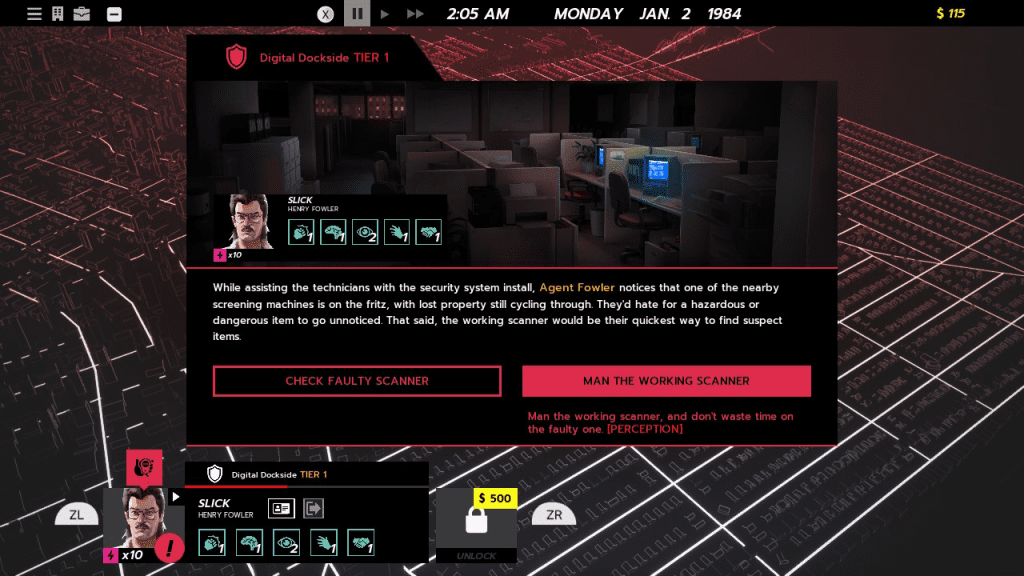
Once per case, the assigned agent will run into a situation where you need to intervene as the player. You’ll give guidance on how the agent should respond to the situation with one of two approaches, trying to pick the best option given the agent’s characteristics. Despite all this careful planning, the agent’s success is decided through chance.
You virtually roll dice and try to get a good enough selection to succeed. The number of dice you get “for free” is determined by your character’s corresponding stat: if they’re a good skill match, you get three dice; if they’re not, you get one or two. Bonus dice can be “purchased” for each interaction by using action points (the resource needed to tackle cases in the first place). Critical successes need two 6s, and solid successes are one 6 with two 5s. Any other combination results in failure. This is pretty hard to get! The odds aren’t really in your favor. That’s why you can use precious action points to roll bonus dice. In theory, anyway.

I never successfully completed a case in five hours of the game. No natural success rolls, and I could never successfully activate the bonus dice rolls when I really needed them, even when I had enough points—see how they’re greyed out in the screenshot above? Willie has 12 action points left, but I couldn’t pick any of the three bonus dice to use.
I was often unable to physically even receive or roll three dice, which is apparently mandatory. Once, I was able to get two 6s, supposedly a critical success, but I didn’t have a third dice to input. Despite my supposed victory, which I was very excited about, I received my dreaded “Failure!” sign.
Rough Justice: ‘84 game is incredibly unforgiving with regard to a mechanic to which all progress is tied. These game design choices unfortunately made Rough Justice: ‘84 virtually unplayable. I did have a thought that maybe the unusable bonus dice thing was a bug on the Switch… but what does it say about the game that I truly can’t tell if it was intentional or not?
Irregardless, the luck of the dice rolls and inability to spend action points to cash in for extra dice meant I received a bright red “Failed!” approximately 18 times. This just isn’t fun. I kept running out of money, so I started over and went through the tutorial rigamarole three times. Despite my attempts to follow the myriad instructions, I just couldn’t make any progress. I don’t like reviewing games without having rolled credits on them, but what can I do if I can’t even really start?
Out of Control
Much of the game feels mechanically broken, or maybe I’m just really dumb. The controls were difficult, complicated, and inconsistent, and I’d sometimes have to press buttons multiple times before they’d take. Icons were so small that I often didn’t know what I was even clicking on. I’d try to click on a character’s case to help them only for the game to pop open a store window on the other side of town that my “mouse” had happened to pass through when traversing the map. Loading times were laborious. Character portraits sometimes flashed in when I don’t think they were supposed to, covering text (see the following screenshot as an example). Buttons flickered as I hovered on them, obscuring the command.
Some of the biggest technical problems are with the game’s words, which is a major issue given that this is essentially a spiced up visual novel.
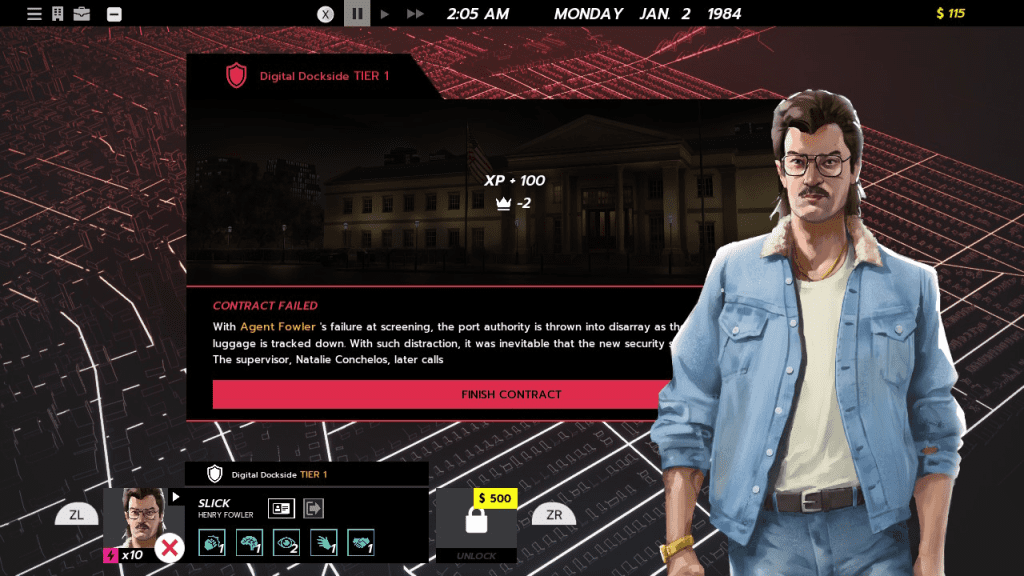
The text is incredibly small (especially when played on the Switch handheld), and there is no option to increase it. It’s so bad that it feels like an accessibility issue. It often made me physically uncomfortable to read, which is not great, given that 75% or more of the game is reading. I encountered several pages with typos, so even when I could see, it wasn’t a great experience.
Furthermore, much of the scenarios seem to be generated through a mix-and-match algorithm, and the details really just weren’t that fun to read. The game is inconsistent with the ability to speed through text (which appears slowly, letter by letter, typewriter style), and I sometimes accidentally chose the wrong stat-based choice, clicking quickly, desperate to move the rote event details along faster. The game’s cases didn’t feel personable, and it certainly didn’t feel like we were serving any kind of justice.
I had the sense overall that this game was designed by people who very much knew the game they wanted to make, and kind of forgot that new players have not spent years in development with them. The game telegraphs many things in truly dozens of tutorial pop-up boxes, but often leaves players out to dry with actual gameplay. For example, for a case, I had to choose for my agent to pursue an intelligence- or perception–based check. But I couldn’t remember what the five little icons meant since I had been bombarded with so many tutorials, and in the moment when I’m asked to make a choice, I am not allowed to re-check my character’s stats. The game also doesn’t tell me my chances of succeeding with this agent at any given moment. So, my luck was already low given the nature of the dice, and when you add in these weaknesses in communication, my likelihood of succeeding was nil.
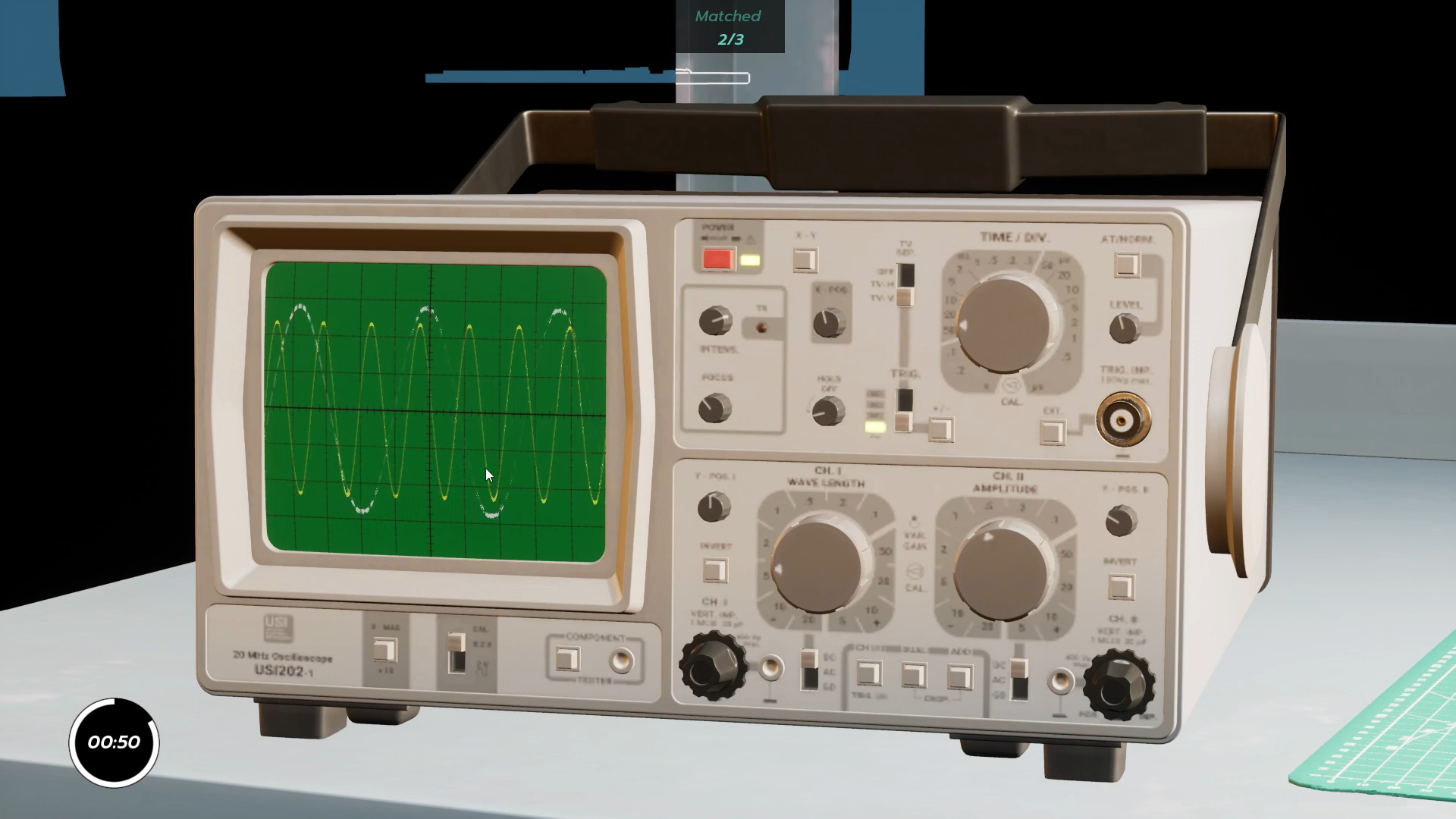
I encountered this infuriating lack of information in other places as well. Players unlock some cases that are solved by mini-games, like trying to quickly tag contraband items in an airport security line, and are encouraged to check out the “tutorial.” However, the tutorial is a static screen with overly simple instructions. Then, as you’re learning the quick time puzzle for the first time, you’ll inevitably get it wrong a few times (because, again, the controls really aren’t intuitive). Make a few mistakes, and it’s case failed. Again.
As I played, I was reminded of Citizen Sleeper, another story-driven game that works around dice interactions. However, that game keeps the joy of chance and decision-making while still communicating clearly to the player what’s happening. Citizen Sleeper, which I ranked in the top three games of 2022, is a masterclass in dice-based storytelling; it’s also a game that, if you’re at all interested in this kind of premise, you should play instead. The one thing I can say in Rough Justice’s defense is that, similar to Citizen Sleeper, it has an incredible, well-defined aesthetic.
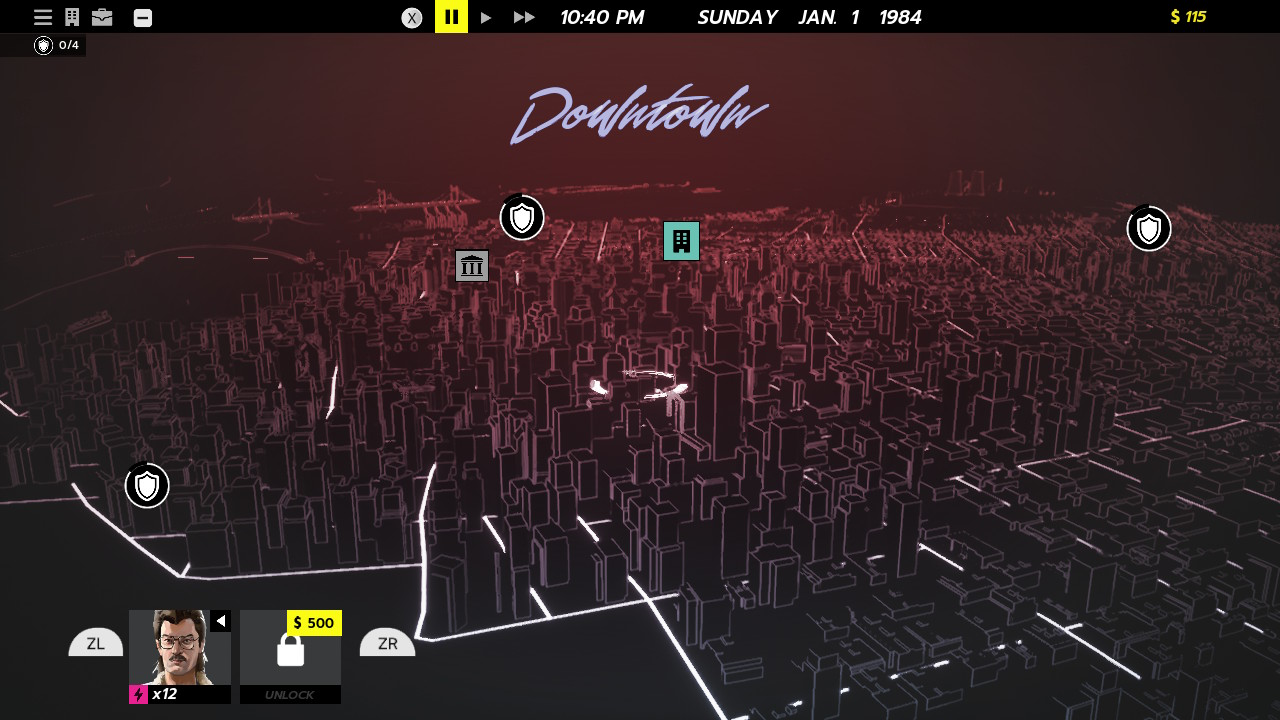
Vibes!
The game’s style is sick. Neon text and big shoulder pads greet you immediately. Moving around the map is exciting as neighborhood names pop up in just the right typeface. There is a romantic ideal here of big American cities in the ’80s, surely inspired by Miami Vice, and it’s alluring.
As highlighted in promotions, the profiles of the agents are the main attraction. Seeing all the varied profiles lined up is enticing. The strong, consistent style is supplemented with short but compelling bios. It’s not a perfect cast, though. Not all of the agents’ portraits looks equally fine-tuned—some have a sort of dead eye, uncanny valley look to them.
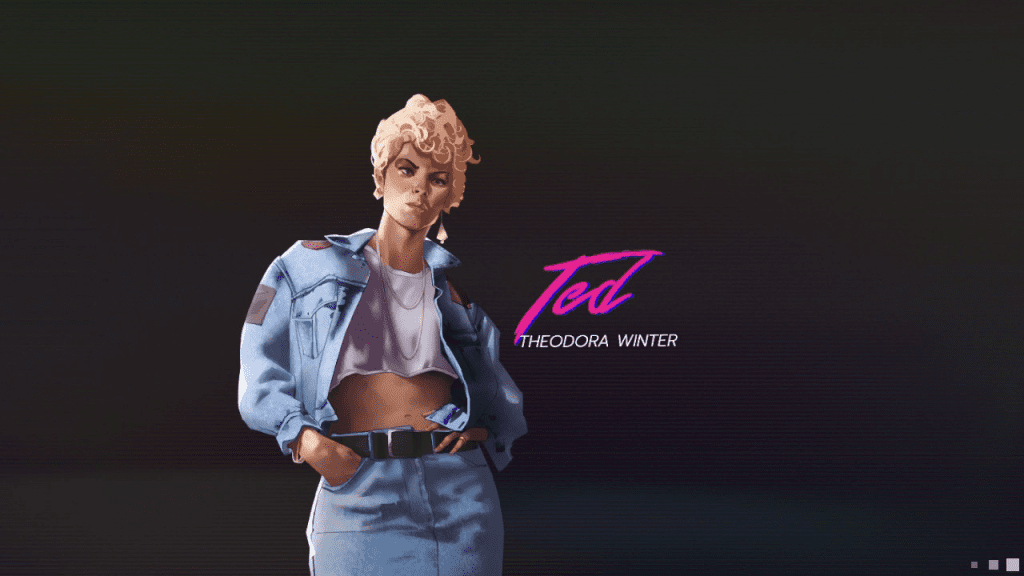
The original soundtrack is perfectly synthy, immediately immersing players in a precise cultural moment. It reminded me of Beverly Hills Cop, one of my favorite films of all time. Unfortunately, the music is let down by sloppy voice-over work.
In the tutorial, Hank admits his agency is unsuccessful, having ruffled the feathers of a lot of important players in the city. He’s a bit sleazy, too, not quite apologizing for never visiting the player-character in general. His long hair looks a bit greasy, overlaid on a too-big trench coat. Yet, despite this specific characterization, Hank’s actor sounds respectable and clean. He’s giving corrupt cop (maybe even someone who got the famous good guy locked in jail in the first place…?) but his voice sounds like a nice young dad who’s just moved to suburban America.

Hank’s not the only character with voice problems. When you pick an agent, they’ll say a greeting or a fun catchphrase. However, on my first run, the audio for picking MJ Sugar (the game telegraphed him as the best pick for the tutorial caseload) was so incredibly unbalanced and blown out that I actually exclaimed in discomfort and took my headphones out on instinct.
It’s too bad that even the game’s strengths—its look and sound—are not without their shortcomings.
No Platform Shoes, Only Woes
When reviewing a game for a particular platform, I tend to do so in a vacuum. If a game is released on that platform, it absolutely must be playable, much less have parity with other platforms. (I wrote an op-ed regarding Pentiment’s poor Xbox One version and lamenting poor ports in general.) However, I was so disoriented by this game that I was curious to see what players on Steam thought.

Rough Justice: ’84 currently is “Mixed” on Steam across 50 reviews, sitting on an average of “6/10.” Many reviews complain of repetitive gameplay, typos, and the painfully slow typewriter text effect, making the game a drag. Others praise the story and artwork. While the bugs seem to be specific to the Switch version, unfortunately, the game doesn’t seem to be a particular hit on any platform.
Is Rough Justice: ’84 Worth Playing?
In its current state, no. I don’t like being negative about creative work that people have put a lot of effort into, but the game just doesn’t work for me, literally or figuratively. There are some interesting elements in Rough Justice: ’84, and I genuinely wanted to get to know them, but it felt like the game was fighting me every step of the way.
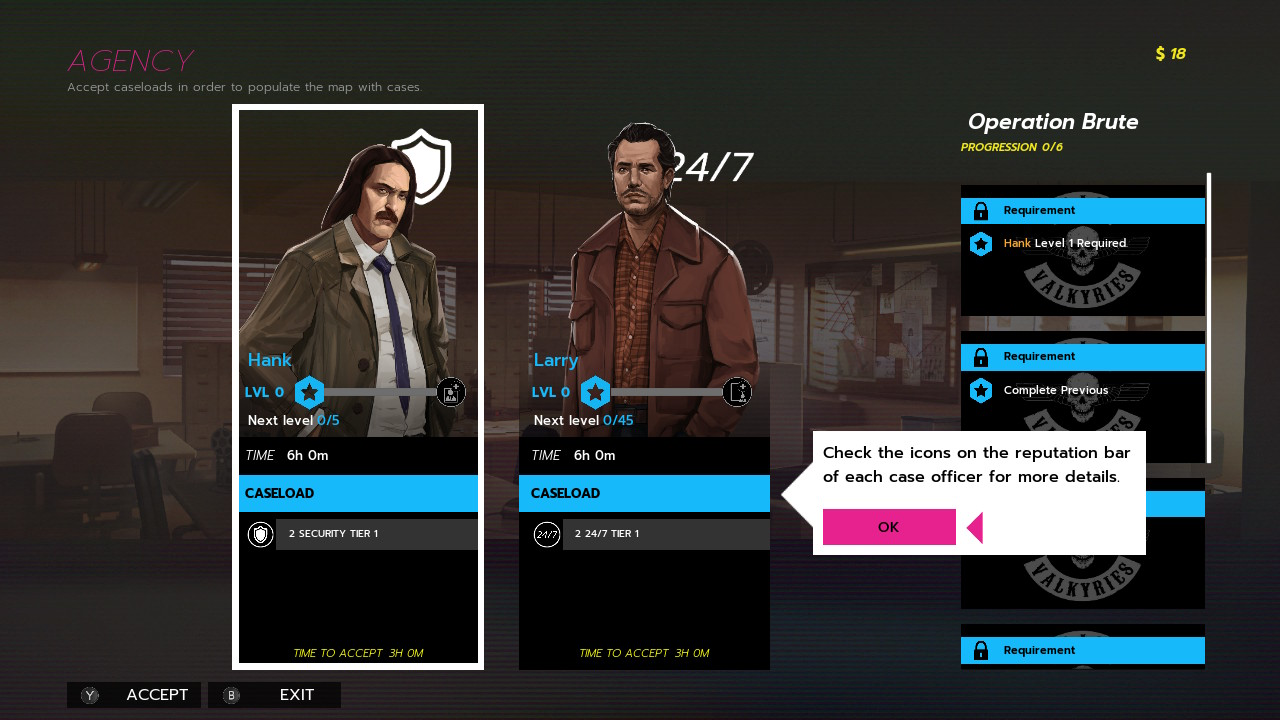
Rough Justice: ’84 would probably work as an actual board game. There’s definitely something in the mechanics and storyline that could intrigue hardcore tabletop gamers, and the world aesthetics are appealing. However, just because tabletop games are having a golden era, that doesn’t mean that video games can easily emulate their strengths (or vice versa). I think there’s potential here… but for now, it’s only potential.
My biggest problem with Rough Justice: ’84 wasn’t even that it didn’t work—it’s that, even when it did, I still just wasn’t having any fun.
Score: 4.0/10
Rough Justice: ’84 is available on PC, Nintendo Switch, Xbox Series X|S, and PlayStation 5. MSRP: $15.99 to $19.99, depending on platform.
Disclaimer: A review code was provided by the publisher.
Amanda Tien (she/her or they) loves video games where she can pet dogs, punch bad guys, make friends, and have a good cry. She started writing for the site in 2020, and became an editor in 2022. She enjoys writing about mystery games, indies, and strong femme protagonists.
Her work has also been published in Unwinnable Monthly (click here to read her cover feature on Nancy Drew games), Salt Hill Journal, Poets.org, Litro Magazine, Public Books, and more. She was the Co-Founder and Editor-in-Chief of Columbia University's Culinarian Magazine, and served for two years as the Managing Editor of Aster(ix) Literary Journal.
She recently graduated with a MFA (Master of Fine Arts) in Creative Writing from the University of Pittsburgh. Her writing, art, graphic design, and marketing work can be viewed at www.amandatien.com.
She does not post a lot on social, but you can find her on X and on Instagram.


